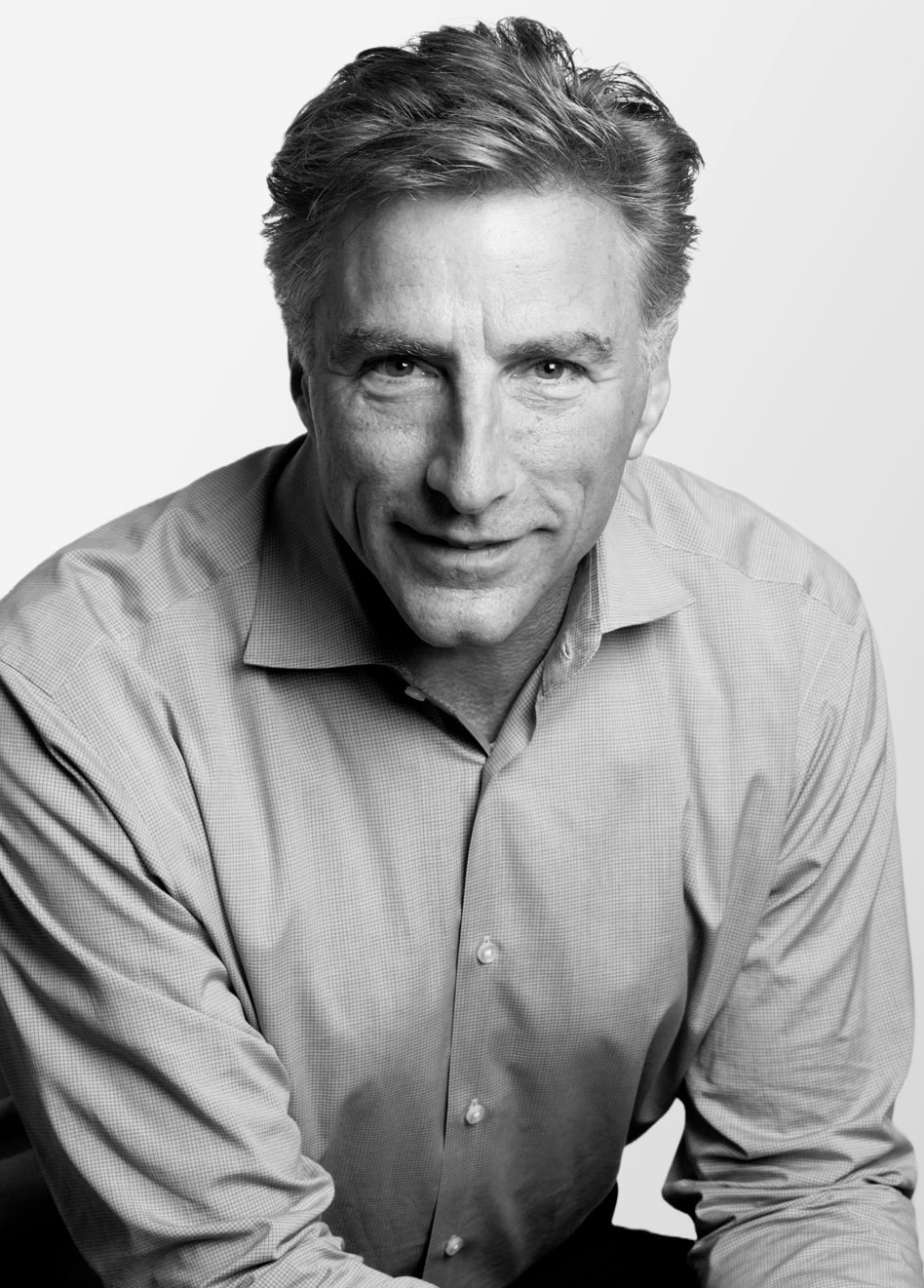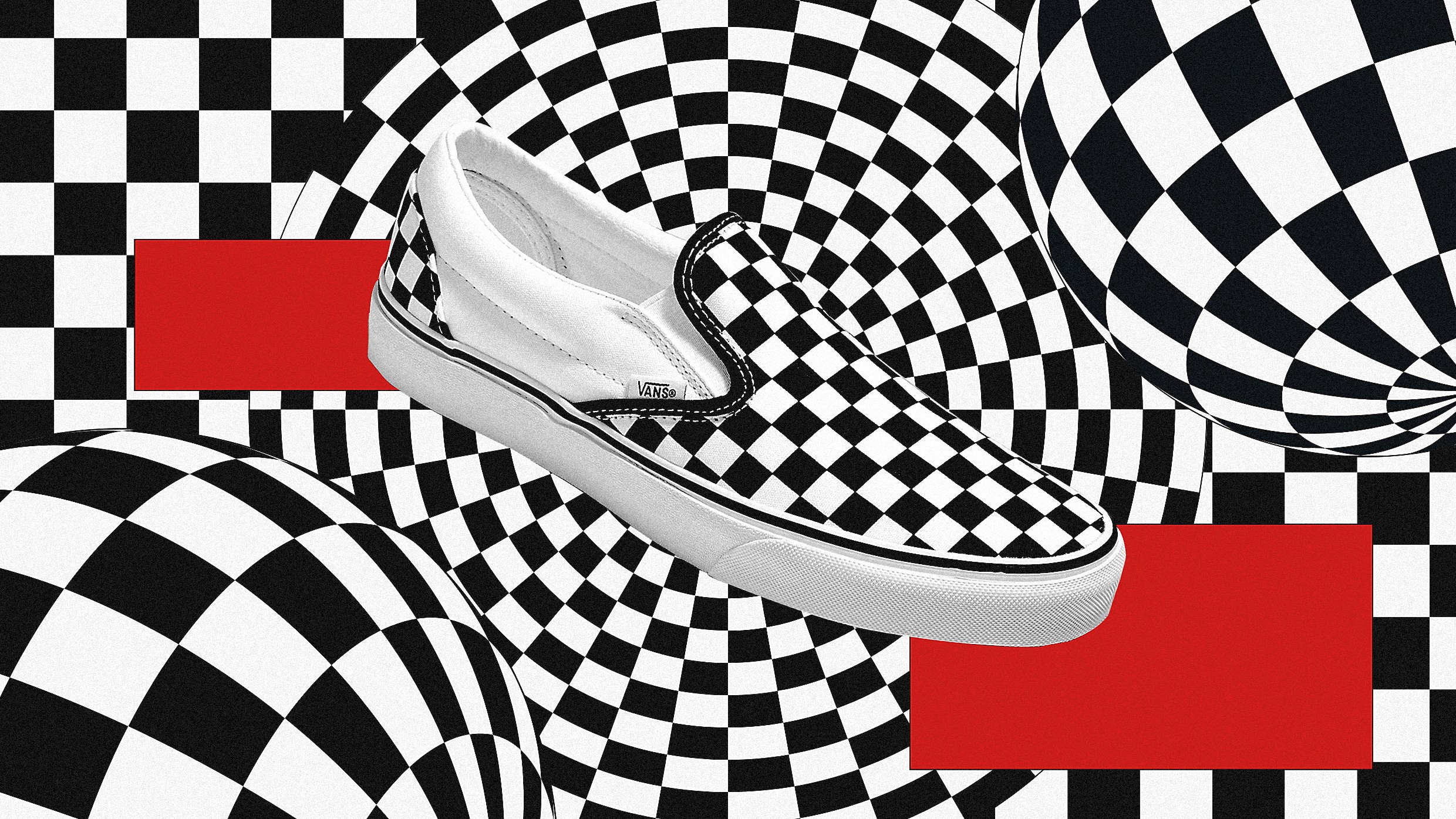Bracken Darrell likes starting over.
“This idea that you restart every day—that’s how I feel about everything,” he says. “You have a chance to reinvent things.”
It’s a mantra he’s intimately familiar with. Six months ago, Darrell became the new president and CEO of VF Corp., which owns brands including Vans, North Face, Timberland, and Supreme. Before that, he’d spent nearly 12 years as the CEO at Logitech, where he was instrumental in reviving the hardware company’s culture, rebooting its product line, and building an internal design practice rarely matched in corporate America.
Darrell started at Logitech in a moment when the company was overshadowed by Apple and its innovation streak led by Jony Ive. He managed to turn the company around, shaping it into a consumer tech juggernaut and a beloved work environment for many in tech and design. At VF, Darrell has been tasked with a similar turnaround challenge.
VF has been fighting off decline for years, with North Face’s growing revenue stream propping up lesser-performing sister brands like Vans and Dickies. In its October 2023 earnings call, VF reported a 70% drop in dividends from Q1 to Q2. Vans, once the shiny trophy of VF, reported a 22% decrease in year-over-year revenue.
For the moment, Darrell is focused on resuscitating Vans. He’s serving as interim CEO to the Southern California company while taking stock of VF as a whole. Darrell has plans to significantly reduce costs at VF, at the same time investing in brand building across VFs companies. His turnaround plan requires as much corporate maintenance as you’d expect, but there’s another weapon in Darrell’s arsenal: “We will absolutely be a design company,” he says.
The turnaround man
Turnaround stories aren’t new: Apple, General Motors, and Disney CEOs have all made headlines by embracing the process of cleaning house and reinvention.

Darrell, though, is a different kind of CEO. Despite the hot and cool nature of design as a driver of corporate change, Darrell is steadfast in his belief that design is the core differentiator for a business to grow into a thriving, dynamic organization. “You won’t hear it on my earnings call,” he says. “I’ve got to reduce costs. I’ve got to get the structure of the organization right. That’s the necessary housekeeping.”
But to listen to Darrell talk about his path forward at VF, it’s clear that he’s giddy with the possibility of what design can do for his organization. Darrell believes that a design mindset and skill set should be “expected and requested” at every level of the organization. “Everyone learns how to give and take,” he says.
It’s a skill set that is specific to trained designers, and can be shared and multiplied to infuse empathy, listening, understanding, and vision across an organization, from HR to finance to engineering. Alastair Curtis was chief design officer at Logitech and worked closely with Darrell during his time there. He says Darrell helped the organization build trust in design as a necessary skill set, “at first leading from the front,” but then after some time “leading from behind.”
Curtis says Darrell gave his team the “latitude, space, confidence, and support to grow and to think about what the company can be versus what the product can be.” That difference, Curtis says, made it so Logitech’s C-suite could leverage design as a value add across the business, not just as a way to dot the i’s and cross the t’s on product.
Guerrino De Luca served as president and CEO at Logitech for nine years and helped select Darrell for the job after pulling him away from his role as global president of Braun. “When Bracken showed up everyone was like, ‘What?!’ One by one they said, ‘Boy, this guy is something.’ Yes, he isn’t classic; but maybe we don’t need classic.”
As De Luca tells it, the hope was that Darrell would leverage his expertise in consumer products to elevate the Logitech brand. Darell hired the company’s first chief design officer and began to integrate design thinking into every team at the organization. The design team at Logitech grew from single digits to more than 100 after Curtis joined, with a plan to expand the company’s then-practical product line into speakers, headsets, and more. Curtis and Darrell even wrote their own list of 10 design principles, a nod to Dieter Rams’s famous design rules.
All the while, Darrell applied his own form of design research to Logitech by making sure employees felt like they could question anything and make mistakes along the way. “He came out as a design guy,” De Luca says. “It took that as the engine for our turnaround.”
Darrell believes design gives people “the freedom to iterate and make mistakes,” and that it resonates with “anyone who has colored outside the lines.” He sees design as a vehicle for communication, empathy, efficiency, possibility, and transformation. Darrell describes himself as equal parts “poet and accountant.” That’s why, he says, evangelizing design as a way of shaping and running a business works for him. “The poet in me believes anything is possible,” he says. “The accountant looks at the numbers. You can’t just sit there and dream. You have to really do.”
To be clear, Darrell is not a designer. He studied English in college and admits that he landed on business as a path once he realized as a high school sophomore that there was no chance of him making it to the NBA. (“I was this height in sixth grade,” he says with a laugh, noting he’s still on the court four mornings a week.) Darrell wanted to make a difference in the world, but he hates politics, so he landed in business as a way to do that.
A new way to lead
Jon Iwata has interviewed more than 140 CEOs in his role as practice leader and executive fellow at Yale University’s Program on Stakeholder Innovation and Management, and though he doesn’t know Darrell personally, he describes Darrell’s way of framing problems through design as unusual. “In every one of these interviews, I ask, ‘What skills, competencies, and approaches do you think would serve leaders well today?’ They don’t say ‘design.’”
Instead, Iwata says, the CEOs he’s spoken to usually say they need to frame problems multidimensionally, across functional lines, and through tremendous collaboration. “All of this, designers would recognize and view from the user’s point of view. CEOs don’t think that way. And it’s often not until they become CEOs that they realize they don’t think that way,” he says.
Darrell is an unusual and promising CEO archetype because he does think in terms of the end user. For him, the VF job surfaces a new challenge in the consumer space. While fashion and design are quite obviously linked, Darrell says he is “attracted to fashion because it is so connected to culture and happiness.” Brands, he says, are like “clubs” we join. Buying a brand’s products is like gaining membership to its club, where you can simultaneously forge an emotional connection and assign meaning to a company’s output.
That intuition and language around business building is what makes Darrell so magnetic, De Luca says, noting, “He is capable of working deep and broad more than anyone I have met. He listens to people and data. A good chess player thinks three steps ahead. He thinks four.”
Darrell’s time at Logitech might offer the most insight into how things could play out at VF. Curtis says Darrell’s level of understanding of design often translated to incredible speed in product development and innovation. For instance, if there was a plan to make a new product or build something different, Darrell was able to sign off on a simple sketch on the table, absent a fully developed concept model. That way of working, according to Curtis, made room for gut instincts and leveled the playing field for people with different strengths in the organization.
“I think the design world has done a phenomenal job developing the skill set of design,” he says. “Where it hasn’t done a great job is educating and helping designers, CDOs, and design leaders to understand how to grow and prosper in a corporate environment.”
Curtis says the partnership he had with Darrell helped him build the confidence to lead a design organization and shape the company alongside the CEO. He believes the key to integrating design into business is to create an environment in which it can be leveraged alongside all the other unique skills inside a business. That is something Darrell does deftly.
Still, there’s been a shift at some organizations away from the idea of being “design led.” Companies like IBM, Expedia, and Google have all let go of some of their most gifted design talent. In the years since “design thinking” was adopted into the corporate lexicon, some have started to question whether putting design on a pedestal makes sense—after all, design alone can’t make or break a company’s bottom line. But Darrell is a believer that design as a through line can bolster a company’s ability to innovate.
To listen to him talk about it, Darrell seems genuinely surprised that he’s a rare bird in the world of corporate leaders. “I should not be best in class at this,” he says. “I think one of the reasons design gets lost is because it gets oversimplified. I don’t think anyone has gone nearly far enough. It’s all a design problem. And yet it is important to know finance and accounting and operations and marketing. Underneath it all is a design problem. It needs to be philosophical and practical. Sometimes we forget the philosophy.”
This all sounds very kumbaya, and maybe it is. Curtis says if Darrell were to have a weakness, it would probably be the very thing that also made him successful at Logitech. “He wants to encourage everyone to push the envelope, to go fast, to innovate,” he says. “That’s amazing. But you’ve also got to be disciplined in stopping things as well as starting them. Bracken’s optimism can be his Achilles’ heel sometimes.”
Kirsty Russell, who has been head of people and culture at Logitech for the past eight years, attributes this to Darrell’s “overriding faith and belief that individuals are responsible for their own impact and maturity.” After the initial jolt of inspiration and excitement around new ideas and transformation, she says, “he is more than happy to go back to ‘You’re an empowered adult and I trust you to do this.’ He is a fixer; that is true. That isn’t what motivates him. The fixing part is just the plumbing. For him, it is a fix and a dream.”
For Darrell’s part, he’s well aware that the road ahead at VF will require both: a fix and a dream. He’s knee deep in the fix part and won’t get too specific about his dreams just yet. Those plans are still very much under wraps. If the trajectory he took at Logitech is any indication, perhaps there are some parallels expected at VF in terms of building out a team with design chops. And while those details are just conjecture at the moment, what’s not is Darrell’s palpable enthusiasm and optimism. “I’m so excited,” he says. “The poet in me thinks there is no way this thing can’t be four or five times what it is. . . . It’s potential.”
(7)







